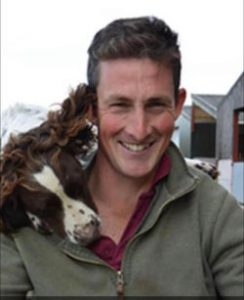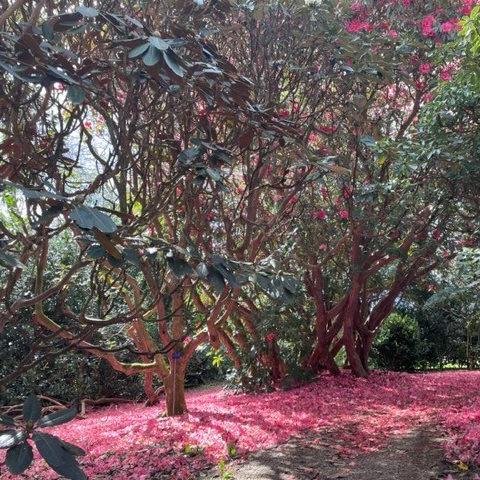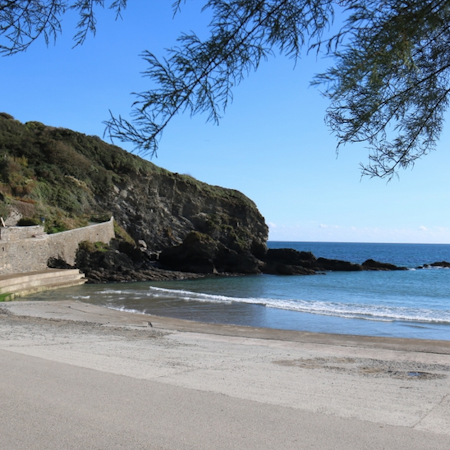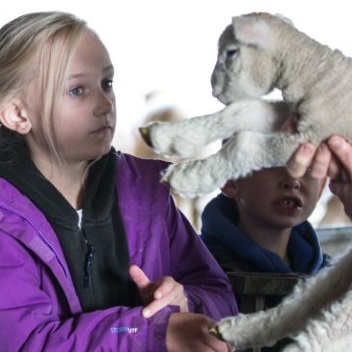Caerhays Barton Home Farm

Bob Fletcher, Farm Manager
The Farm and Food
The Home Farm at Caerhays was established in the 1860’s and has been farmed in hand ever since. Today Bob Fletcher, and the assistant manager, Tiffany Kemp utilise the core of the estate to produce high quality beef and lamb. The unique costal location gives the animals salt rich grasslands to feed on adding to rich quality product that reaches your plates.
The farm has had to evolve over the years adapting to the challenges of the day. However throughout there has always been a constant consideration for the environment the farm occupies. The diverse landscape provided many different environments from rich arable to hill grazing, woodland to wetlands, coastal scrub and water meadows.
The farm is managed in a traditional way but with modern thinking applied. A balance of livestock and arable farming processes work with nature not against it. On the farm there is a flock of around 400 ewes and a herd of some 250 beef cattle.
The environment
The overall farming policy is ‘extensive’ with low inputs and low overall stocking densities. The whole farm is subject to a Higher Tier Countryside Stewardship Scheme (HTCS) which requires specific management and husbandry policies designed to enhance and preserve the environment whilst producing quality food.
The Home Farm first entered a Countryside Stewardship Agreement in 1992 which has continued unbroken in various forms to the present day. The beginning of 2024 saw the start of the latest and largest HTCS agreement yet. Aiming to build on the demonstrable and proven successes of the last 30 years of environmental management. The principal objectives of the new scheme is to restore an additional 90 hectares (c. 220 acres) of Species Rich Grassland. This will complement the 20 hectares (c. 50 acres) already established as Species Rich Grassland as well as the plethora of additional benefits the HTCS helps deliver.
This is believed to be one of the largest HTCS restoration projects in the whole of the West of England. It has only been possible to attempt this project at this scale because of the hard work and dedication to the environment over the last 30 years.
The Species Rich Grassland restoration is being achieved in three different ways. Coastal species rich habitats and species rich grasslands are being treated in the same way as lowland acid grassland and species rich meadows.
1) Coastal fields and, separately, inland fields will be spread with green hay harvested from selected existing species rich wild flower meadows.
2) Coastal and inland fields for restoration will be grazed off until 1st May when all livestock will be excluded until 1st August. The hay will be cut before the fields are harvested ready for the spreading and drilling of wild flower seed. In the first year, seed had to be obtained from the Eden Project to start the seeding process. Subsequently we hope to be self sufficient in harvesting from our own existing wild flower meadows.
3) Cattle and sheep will be encouraged to graze over existing wild flower meadows and into adjoining fields for restoration. They will graze over the green hay and hope to spread further wild flower seeds through their movements over the land.
This will all mean that the coastal areas of the Home Farm will look somewhat overgrown and untended during the summer months. Inparticular the fields above Porthluney Beach will have no livestock in them and will look rather different to previous years. Visitors will now hopefully understand the objectives of this exciting new project.
All cattle on the farm will now be overwintered inside. The research done in the previous decades have shown that cattle overwintered outside greatly reduce the numbers of wild flowers subsequently growing in these fields.
The exception to this is that a small pedigree herd of Aberdeen Angus castle will continue to graze the cliff edges right through the winter months to keep the gorse and scrub in some of these fields under control.
As part of previous environmental agreements at Caerhays we have been able to restore the Coastguards Lookout Hut which is now used for small wedding ceremonies and the castellated arch in Battery Walk Wood which was designed by the famous regency architect, John Nash, at the same time as the construction of the Castle itself between 1807 and 1811. The Arch dominates Porthluney Beach and car park.
Under the new HTCS agreement we hope to restore the deer shelters in the parkland above Porthluney and the wall of the Old Kitchen Garden. This work will restore history, protect nature and secure the environment for future generations to enjoy.

Health & Safety
Our garden paths are steep in places, so please read our safety advice.
More Info

Coastal Walks
Situated on the South West Coast Path, Caerhays is a great start location.
More Info

Visits
Please contact us for more informaiton on garden & farm educational visits.
